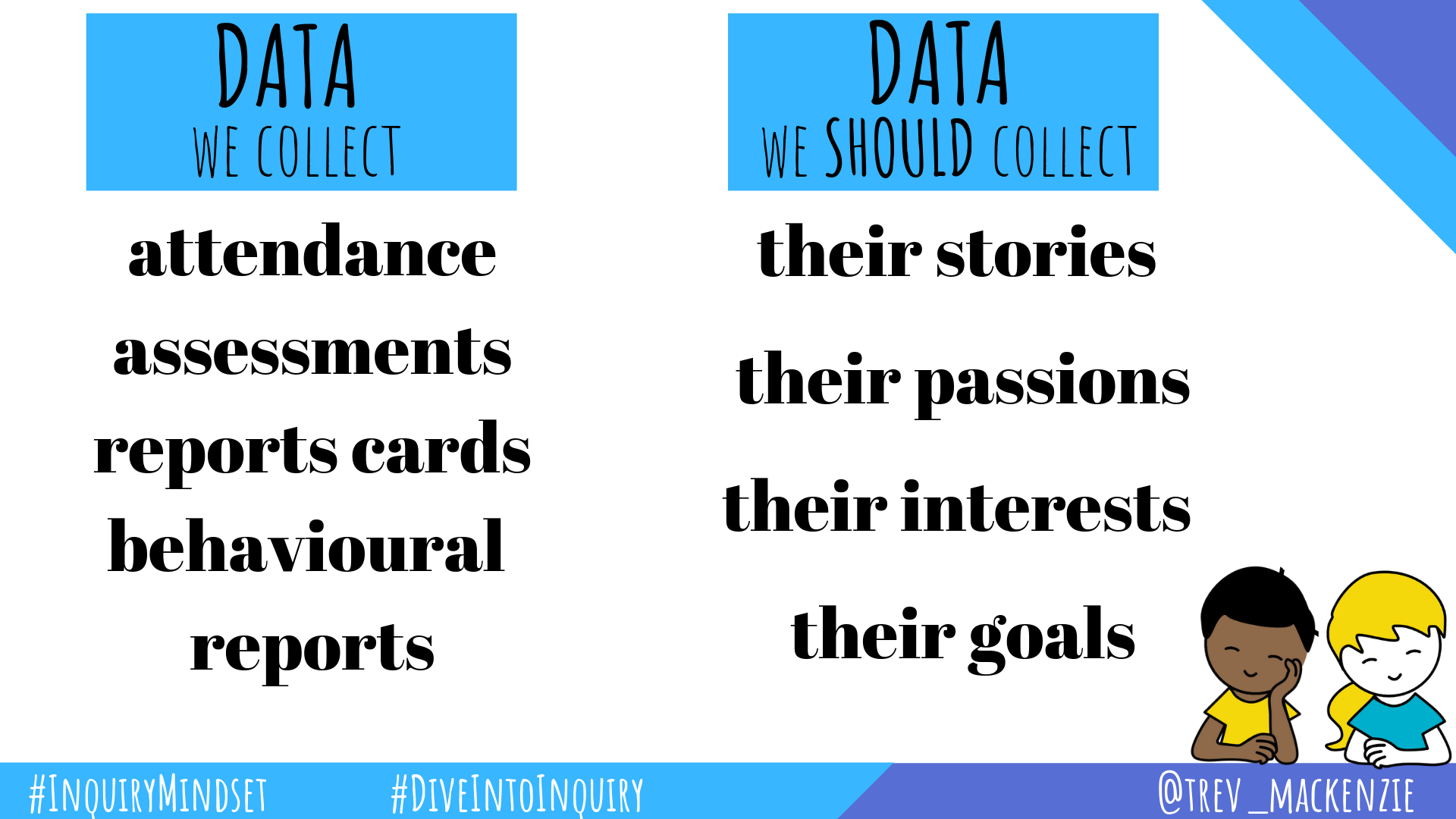Recently I tweeted the above image and within a single day it was retweeted and liked over 2000 times. That’s something. Could you imagine if your students tweeted something from your lesson to this extent? Or if your principal or employer gave you that many kudos for something you shared? Needless to say I think the notion the image suggests around the role of data in education struck a chord with my PLN and I’d like to take this opportunity to grapple with why I think this is the case.
First it’s important to note that my belief around the disparity the image suggests isn’t an attempt to provoke an either/or debate. Nor is the graphic to suggest one is seemingly “better” or more powerful than the other. IMHO it shouldn’t be a conversation about one type of data OVER the other. In truth the graphic reflects a large part of my philosophy around inquiry and assessment and how the two types of data should be used to shape our role as educators.
I’ve always been a teacher driven by action research and in that driven by data. I reflect on my practice and use these reflections (ie data) to drive what I do next, what I revise to move my teaching forward, and what I further question to continue to impact my students. The term data driven does not hold a negative connotation for me. I have made sure that the data I collect is ultimately shaped by, and includes, the voice and identity of each and every one of my students.
And this is at the heart of the graphic: how do you ensure your students’ stories, passions, interests and goals are woven into your assessment practice, guide your instruction, and shape your pedagogy?
Lofty ideals and big ideas, I know. But we are in the business of changing lives. Our students hold the right to have their voice be a part of this process, wouldn’t you agree?
And this is why I believe the graphic resonates so deeply with us all. For too long in teaching there has been an overemphasis on the first column of data. It’s easy to reduce our students to data points and quantitative analysis but that doesn’t make it right.
I leave you with one further question: how would the data in the left column be impacted or altered if we used the data from the right column to guide our practice and shape how we build relationship with our learners? My career has shown me time and time again that when students’ stories, passions, interests and goals are woven into our class culture, our assessment approach as well as our pedagogy (and therefore the data in the first column) is clearer, more accurate, and truer to the student than ever before.
I challenge you to reflect on your own practice and consider how YOU can have your students’ stories, passions, interests and goals drive your teaching. Please share and comment below.


